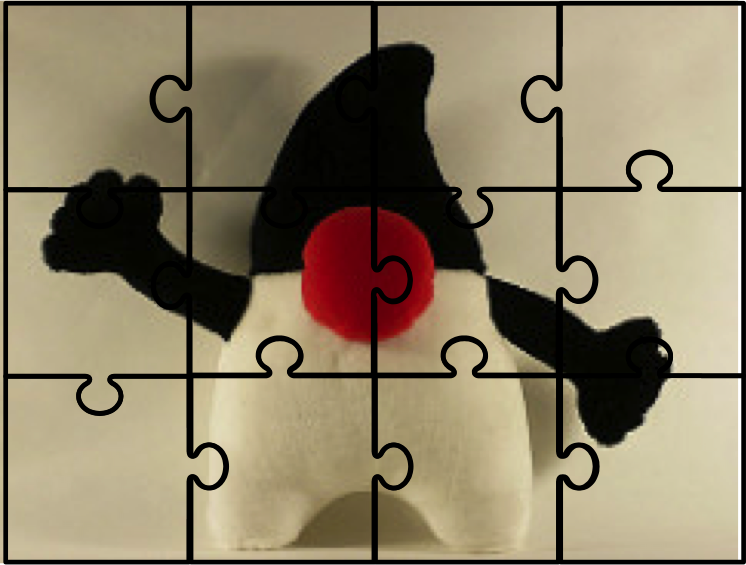I wanted to have an image of Duke (the Java mascot) as a jigsaw puzzle image for a presentation. First I googled and couldn’t find an existing one. I found one on a blog, but it doesn’t look good from the distance. Also, it isn’t labeled for reuse.
So rather than work on content for my presentation, I decided to learn how to make a jigsaw puzzle image. It wasn’t hard.
Step 1 – get an image
I decided to use this image of Duke as a stuffed animal that I found online. I was thinking about using a picture of me and Duke but the lighting was too dark to come out well on a slide.
Step 2 – get a jigsaw puzzle template
I found this template online.
Step 3 – combine
- Open the template in PowerPoint.
- Import/paste the image on the slide you want to use. for me, this was slide 5 – the blank template for a photo.
- Resize the photo/image to be the same size as the puzzle and overlay it.
- Right click your photo/image and choose “Arrange -> Send to Back”
- Select all 12 puzzle pieces (I had to do this manually rather than with command A)
- Right click -> format object
- Choose fill and select 100% for the transparency
- Choose line and select black
- Select all and choose arrange > group
Now you have a single image that you can use in your own deck.
The result

